Everyone leaving Paleochora (often sadly, and vowing to return) on the road north towards Kandanos and Chania will pass, quickly and almost unnoticingly, through the area known as Ligia, just 2km outside our village.
There’s not much to see from the road, just some ruined buildings and a glimpse of two small churches, and the most prominent feature is the twin caves left of, and high above the valley, like giant eye-sockets staring with unseeing eyes towards the sea.
Ligia derives its name from the ‘ligies’ trees which once grew in abundance here, giving a flexible wood used for making tools and other artifacts. The two churches indicate a number of people lived in the area at one time ; the newer one on the road up to Azogires is Agios Kosmas O Aitolos, and the lower, close to the river, is Dodeka Apostoloi (Church of the Twelve Apostles) where there was a cemetery.
The road to Chania formerly passed this church too, keeping left (west) of the valley (from where the bridge is now) to cross a higher bridge, and emerging near the turn to Azogires. Villagers from here would walk 5km down the rough track to catch the bus to Chania, first hiding their old boots under bushes or in holes. Returning some days later, ‘town shoes’ were exchanged for working boots before walking back up to Azogires with their shopping.
Despite passing through Ligia thousands of times over two decades, I’d never climbed up to the caves. Colin and I rectified that one afternoon last autumn, setting off from the new road bridge, and taking the track alongside the river to the ‘Twelve Apostles’ church. Above the door is a cross, made from the indentation of cannon balls in the plaster, and above the church are remains of a concrete aqueduct system, constructed in the late 1950s, an initiative by the then Mayor of Paleochora to supply an electrical power plant there, at a time when Athens barely had electricity. An engraving translates as : “Blessed be the memory of the Saints and Apostles, our helpers in this undertaking.”
The way to the caves isn’t as easy as it looks from below, and once the track runs out, involves crossing rough terrain, fences and a shallow gully, then some scrambling over loose boulders to reach a ramp leading up to the entrance.
I doubt whether anyone has been here in recent years, but animal droppings inside, and pottery shards outside the caves confirmed they were used by shepherds to shelter sheep and goats for many hundreds of years. What appears to be two caves from below is in fact one huge cave, with a quite stunning view from the two “windows”.
Much of the land hereabouts belongs to the Koulieris family, a large and famous family of resistance fighters originally from Chora Sfakion. Their sheep, having spent the summer at Omalos, were stabled here over winter, along with flocks and herds from other families, where the cave’s position was high enough to act as security against thieves. Outside the cave was a milking area where cheeses such as graviera, mizithra and athotiros were produced. Shepherds slept inside the cave on beds made from stones and soil, with mattresses filled with a soft sage-like plant called ‘kalokoimithia’ which means ‘good sleep’, and scattered fresh herbs on the beds when their wives came to visit ……
We spent an absorbing half hour here before, with rain imminent, we made our way back down the valley, this time thinking it might be easier to follow the riverbed ….. but it wasn’t.
I must thank Popi Vardoulakis, Tina Koulieris from ‘Christos’ taverna on the east sea-front in Paleochora, and especially Eftihis (‘Lucky’) Koukoutsakis from the Alpha cafenion in Azogires for all their help in writing this article – ‘efharisto poli’ .

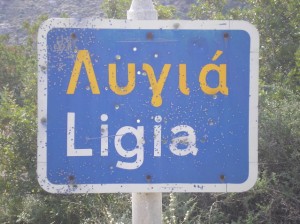
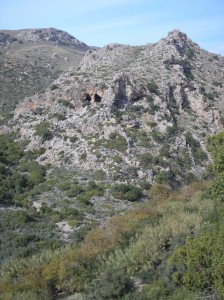
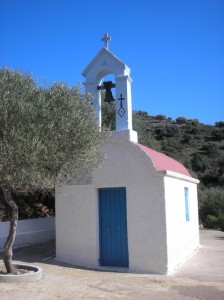
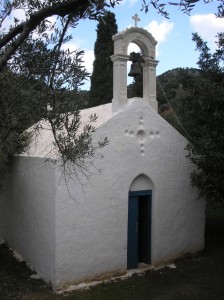
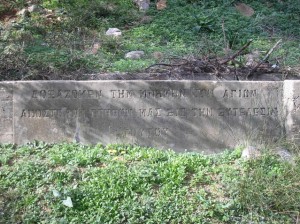
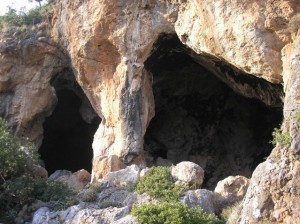
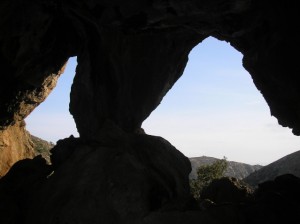

1 comment
I’ve also been noticing those caves for many years… and if the path is “not as easy as it looks”, I am worried about trying it because I already thought it was impossible 🙂 Maybe this summer!